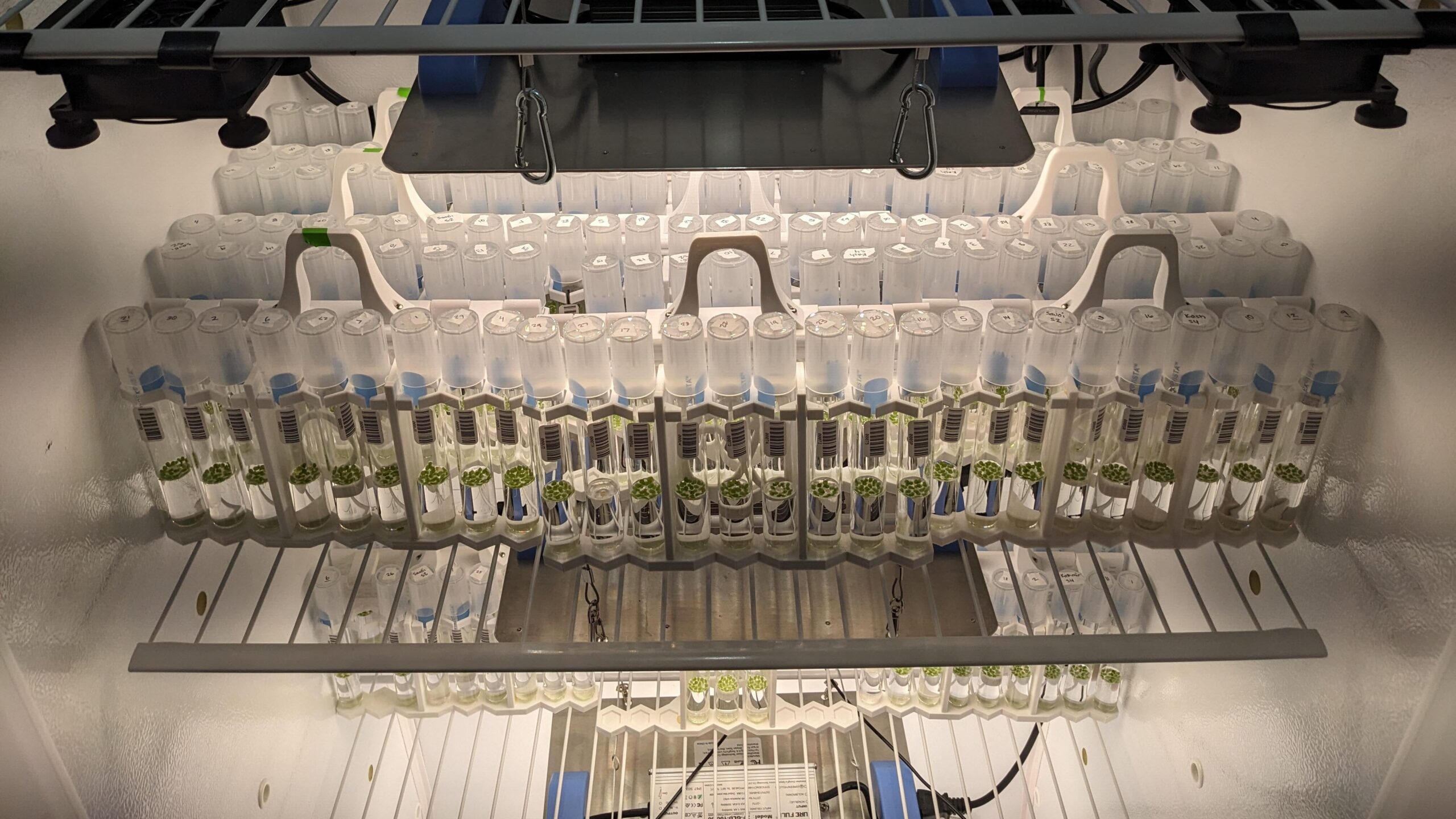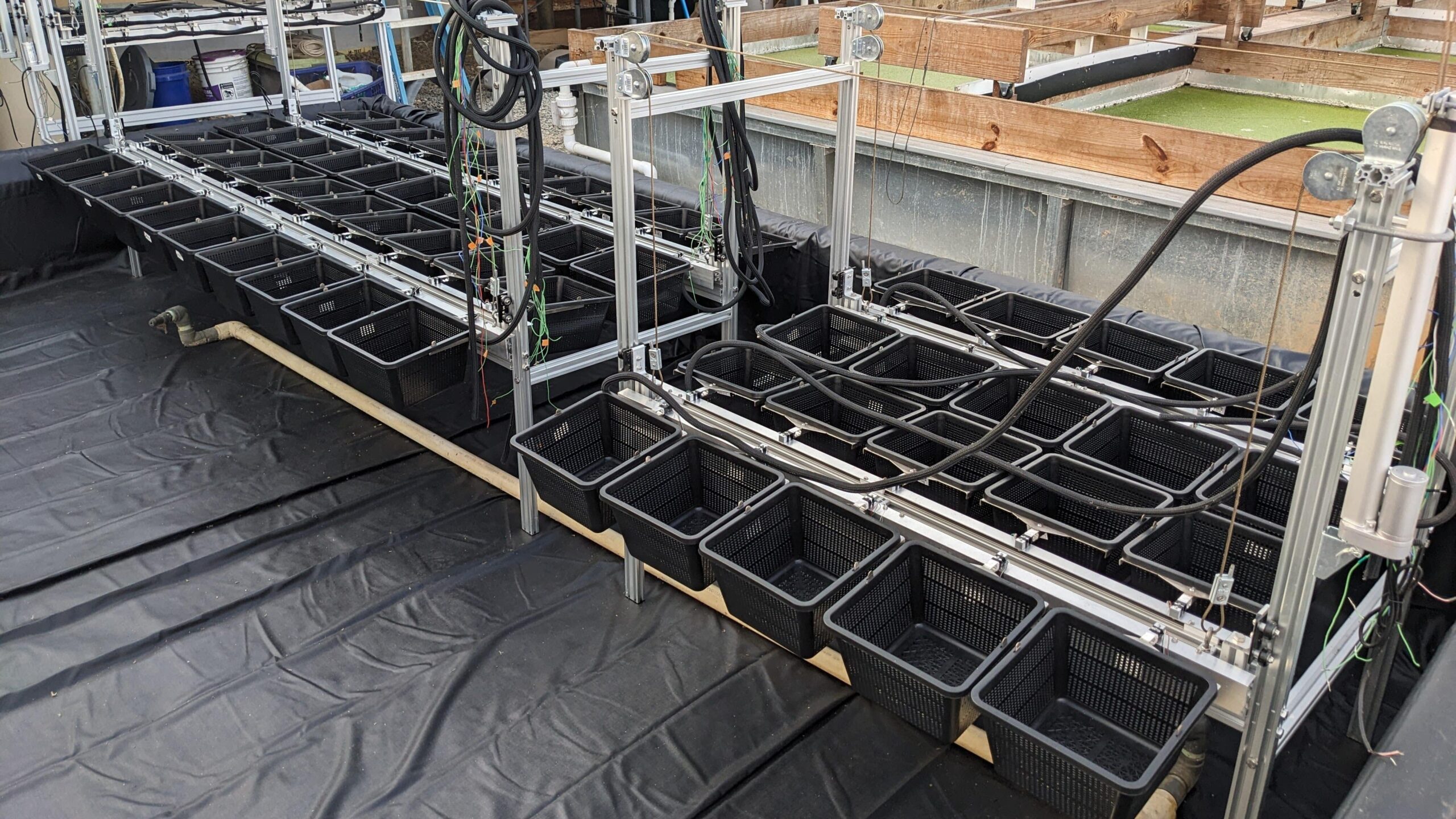If you're not careful where you step, your foot might just splash through a blanket of duckweed into a shallow pond you thought was solid ground. Duckweed (Lemna) is a small, bright green aquatic plant with round leaves that float on the surface of still water, a single root shooting downward to extract nutrients. It is a fast-growing plant that can survive on wastewater and is only found in the wild. At least for now.
In labs and greenhouses on North Carolina State University's campus, hundreds of varieties of Lemna gibba, a species of duckweed, are being analyzed for potential domestication. With a joint appointment in the departments of Molecular and Structural Biochemistry and Biological and Agricultural Engineering, assistant professor Ryan Sartor is the lead researcher behind these duckweed domestication experiments.

"Pretty much all plants and animals that have economic value in our society, especially those used in agriculture, have gone through the process of domestication. We've essentially changed their genomes through selective breeding in ways that work better for us," Sartor explains.
A number of labs around the world study duckweed, but most are interested in using it as a model organism to study basic molecular biology, genetics, evolution or biochemistry, making Sartor one of the few researchers looking at duckweed as a potential new crop. Duckweed possesses several key characteristics that Sartor wants to optimize through selective breeding.

The first characteristic is quality. Duckweed is a high-quality biomass containing roughly 30% protein. It can also be induced to produce more starch content. While duckweed could be used for human consumption, Sartor's lab is more interested in domesticating duckweed for use as low-carbon animal feed or in bioproducts - everyday items made from biological sources that result in lower greenhouse gas emissions. Bioplastics, biofertilizers and biofuels are some examples.
The second characteristic relates to where duckweed grows. According to Sartor, duckweed can extract all the nutrients it needs directly from water, even wastewater. Sartor is using municipal wastewater in duckweed tests and hopes the plant can be cultivated on or near animal waste like hog lagoons. Duckweed is not a picky eater. It can thrive on a widely variable composition of nutrients, Sartor says.

The third characteristic is yield. Duckweed is a high-yielding plant because it can reproduce clonally. In optimal conditions, it will double its biomass every two to three days and the entire plant could theoretically be harvested as opposed to just the fruit or grain. Sartor and other researchers have found duckweed yield to be several times greater than the highest-yielding crops. Sartor is trying to identify traits that impact yield stability as well as overall yield.
Another benefit of trying to domesticate duckweed is that it can go through reproductive cycles rapidly - in as little as five weeks, compared to three to four months for most crops. These short cycles enable quicker plant breeding than many other crops. Though his background is in basic molecular biology, Sartor began doing applied work as a postdoctoral researcher. His combined skills allowed him to develop systems from scratch to accurately measure traits of interest for improving duckweed.

For the first phase of his duckweed domestication project, Sartor has created a customized rack that grows duckweed specimens in upright tubes, which are analyzed by imaging systems at a 45-degree angle. The system tracks growth rates under different conditions. Sartor's current project aims to develop a duckweed variety that grows well on municipal wastewater.
Sartor has also developed a hydroponic greenhouse system that tests 100 duckweed varieties in triplicate, producing 300 samples. These duckweed samples are grown in baskets suspended in water that can be automatically weighed several times per day. Each basket is mounted on a digital scale and can be raised out of the water to record its mass after water drains off. In these artificial conditions, Sartor is selecting for the most promising 10% of the samples to move on to the next phase.

Eventually, Sartor will build outdoor ponds to test the duckweed in real conditions. After that, he envisions duckweed being grown in shallow ponds installed in spray fields near hog lagoons to make the most of that land and the excess nutrients from hog production. If and when duckweed is grown on a farm like any other crop, it could be a boon for farmers' margins and sustainable agriculture as a whole.
This post was originally published in College of Agriculture and Life Sciences News.






